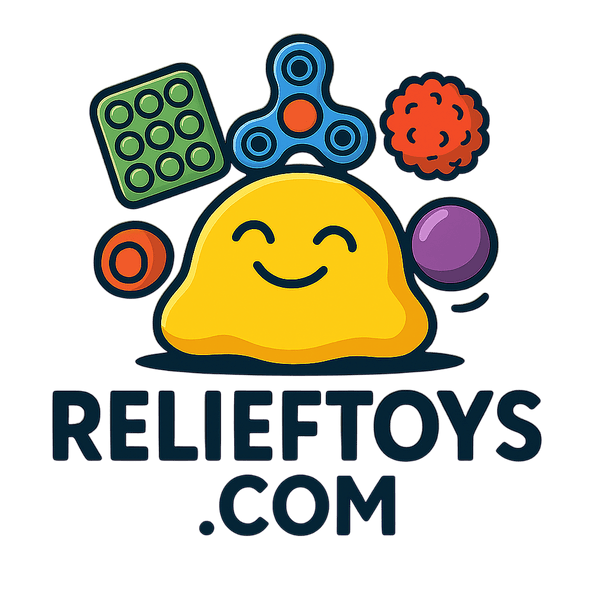How to Choose the Right Fidget Toy for Anxiety Relief
Share
If you’ve ever caught yourself clicking a pen until someone finally snaps at you—or picking at your fingers during a stressful moment—you already understand what a fidget toy is supposed to do. It’s not just a “kid thing” or a TikTok fad. For a lot of people, me included, fidget toys are small lifelines for anxious minds.
When anxiety hits, your body wants movement. Your brain looks for something to do with all that nervous energy. That’s where a good fidget toy can help—if you pick the right one.
So let’s talk about that.
Why Fidget Toys Matter (and What They Actually Do)
I used to think fidget toys were just colorful distractions. Then a therapist explained something that stuck with me: anxiety isn’t only in your head—it’s in your hands, your jaw, your shoulders. It’s in that tension that needs a physical exit.
A good fidget toy gives that energy somewhere to go. It can break the cycle of overthinking, ease tension, and give you something solid to focus on when everything else feels slippery.
If you want to go deeper into how that works, this post from ReliefToys breaks it down beautifully.
Step 1: Know What Kind of Fidgeter You Are
Some people fidget for focus. Others do it to calm racing thoughts. Some need texture; others need motion. Figuring that out makes a huge difference.
Here are a few rough categories I’ve noticed (and lived through):
- The tactile type: You like textures—squishy, stretchy, clicky. Stress balls, putty, or pop toys from this collection might feel right to you.
- The spinner/roller type: You like movement. It helps you regulate breathing without realizing it. Check out spinning rings, rollers, or smooth desk fidgets in the full lineup here.
- The quiet fidgeter: You don’t want to make noise or draw attention in meetings or classrooms. Look for soft, silent tools like smooth stones or subtle magnetic toys.
- The sensory seeker: You need bright colors or engaging shapes to pull your focus out of your head and into your hands. Great for kids, too—see these options made for them.
Knowing what kind of fidgeter you are helps you skip the trial-and-error phase (and the drawer full of random gadgets you never touch again).
Step 2: Think About Where You’ll Use It
This part matters more than you’d think.
If you’re in an office, you probably don’t want something that sounds like bubble wrap or flashes colors like a rave. A small, silent spinner or a smooth worry stone might be perfect.
But if you’re at home, decompressing after a long day, bring out the squishies, the clackers, the stretchy strings—whatever feels good.
Kids, on the other hand, might need something sturdy and bright that can survive being dropped or chewed on. ReliefToys’ kids’ stress toy collection has some fun, durable picks.
Basically, context is key. A “perfect” toy in one space can be distracting in another.
Step 3: Focus on Feel, Not Just Looks
You’ll see thousands of fidget toys online, all shiny and clever-looking—but the real test is how it feels in your hand.
A lot of anxiety lives in your fingertips. The right texture can anchor you when your thoughts scatter. Personally, I keep two: one with resistance (a stress ball that makes my hand work) and one smooth and repetitive (a roller I can spin mindlessly).
You might find your perfect fit among these tactile toys.
And don’t underestimate how much comfort can come from something small and simple. Sometimes, the best one isn’t the flashiest—it’s the one that just clicks with you.
Step 4: Build Your Own Toolkit
One fidget toy won’t solve anxiety. But having a few different ones for different moods? That’s a game changer.
You might keep a spinner on your desk, a stress ball in your bag, and something stretchy near your bed. That way, no matter where anxiety hits, you have something ready.
If you’re just starting out, browse through ReliefToys’ full collection or peek at their roundup of top stress relief toys. It’s a solid place to start without getting lost in the endless Amazon abyss.
Step 5: Remember—It’s Not About Fixing You
This part’s important. Fidget toys aren’t about curing anxiety or pretending you’re calm when you’re not. They’re about giving yourself a healthy outlet.
You don’t have to justify it. You don’t have to “grow out of it.” You’re managing energy, not failing to control it.
And honestly, there’s something quietly powerful about taking anxiety—a thing that used to own you—and turning it into motion you can hold.
If you want to explore more or find the toy that fits your hand, your life, and your mind, start with ReliefToys.com. It’s built by people who get it—not just another store, but a space that actually understands why this stuff matters.
Final Thought
Anxiety has a way of whispering that you’re out of control. A fidget toy, small as it seems, is a physical reminder that you can respond—not react.
That’s the point. Not to stop feeling anxious, but to move with it, one squeeze, spin, or stretch at a time.
And that, I’ve found, makes all the difference.
